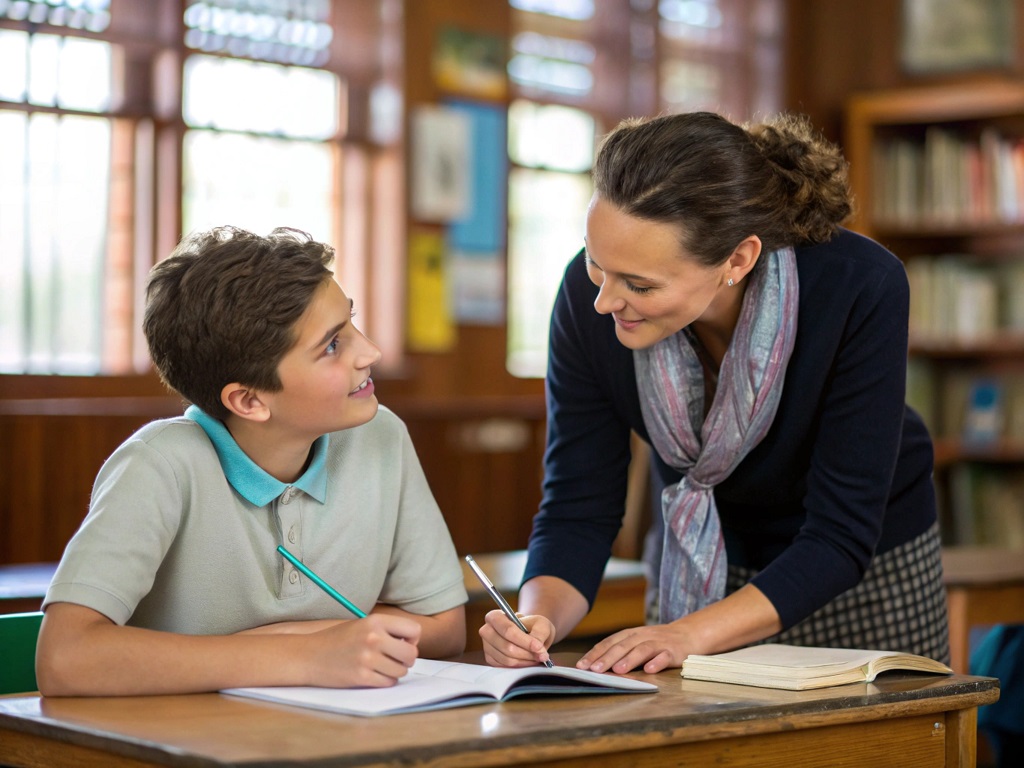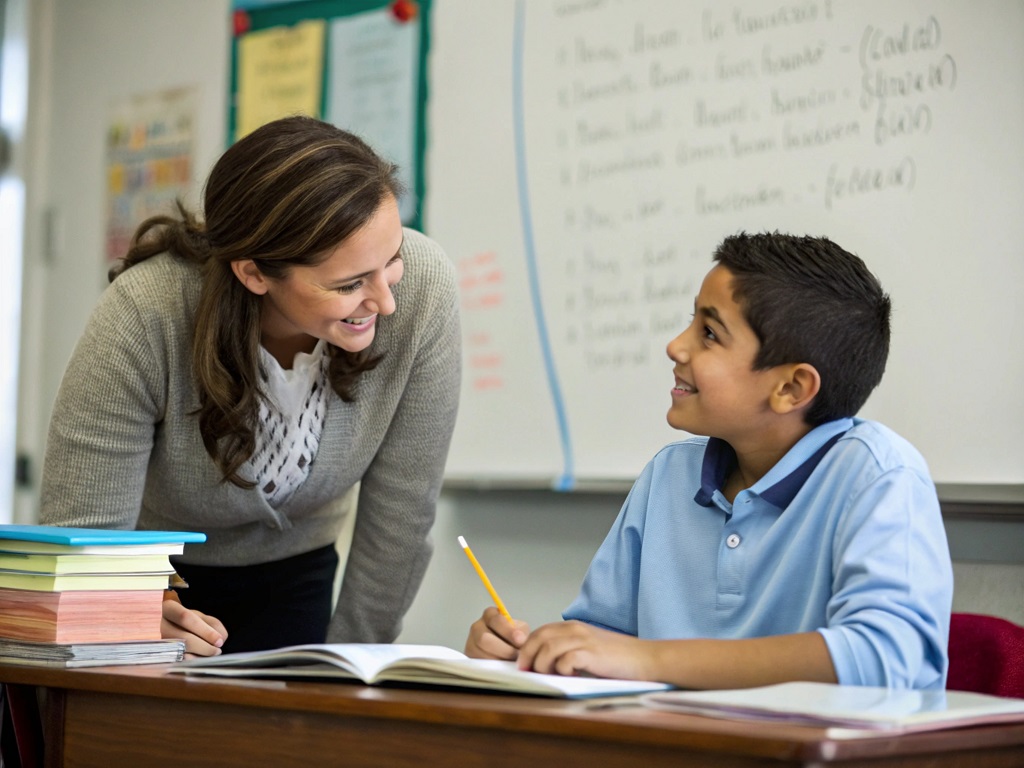Effective communication between teacher student communication is the backbone of a productive educational system. In an environment where learning is the ultimate goal, how teachers communicate their ideas, instructions, and feedback to students can profoundly influence their academic success and personal development. With rapid advancements in technology, educational philosophies, and evolving student needs, understanding the principles, benefits, and challenges of effective communication has never been more crucial.
This article will delve into the history, current state, key concepts, benefits, challenges, and future trends surrounding effective communication between teachers and students, providing a comprehensive guide for educators, students, and anyone interested in the educational process.
The History of Communication in Education

Early Forms of Teacher-Student Communication
The history of communication in education dates back to ancient civilizations, where oral traditions played a central role in passing knowledge. From the Greek philosopher Socrates, who used dialogue as a means of teaching, to medieval monastic schools that relied heavily on rote learning, communication between teacher and student has always been foundational to education.
-
Socratic Method: Socrates used questioning to encourage critical thinking. This form of communication remains a cornerstone of effective teaching, emphasizing dialogue over monologue.
-
Monastic Schools: In the Middle Ages, oral communication was essential, with monks teaching religious texts through recitation and memorization.
The Printing Revolution and Written Communication
With the advent of the printing press in the 15th century, written communication began to complement oral exchanges. Teachers could now distribute texts to students, creating a shift toward more structured, written-based forms of teaching.
-
Texts and Manuscripts: Teachers could now use printed materials to communicate complex ideas in a more standardized way, allowing for better understanding and less reliance on oral explanations.
-
Teacher-Student Letters: In more advanced educational settings, letters between teachers and students became a means of feedback and clarification.
The Digital Revolution and Its Impact on Communication
The 20th and 21st centuries saw the rise of digital tools that transformed communication in education. From the development of the chalkboard to the rise of computers and smartphones, technology has expanded how communication occurs between teachers and students.
-
Chalkboards to Smartboards: The use of visual aids like chalkboards, projectors, and, more recently, smartboards, allowed teachers to present complex ideas more clearly.
-
Online Learning Platforms: With the emergence of platforms like Google Classroom, Moodle, and Zoom, communication between teachers and students is no longer confined to the classroom. Virtual office hours, asynchronous learning, and instant feedback mechanisms are now commonplace.
Key Concepts of Effective Communication

Active Listening
Active listening is one of the most crucial elements of effective communication between teachers and students. It involves the teacher giving their full attention to the student’s verbal and non-verbal cues, ensuring that the student’s message is fully understood before responding.
-
Paying Full Attention: Avoiding distractions and focusing entirely on the student.
-
Non-Verbal Cues: Teachers should be aware of body language, facial expressions, and tone of voice.
-
Feedback Loops: Teachers should paraphrase or summarize what the student has said to confirm understanding.
Clarity and Simplicity
Teachers must ensure that their communication is clear and accessible to students. This can be achieved through simplicity in language, avoiding jargon, and structuring messages in an easily digestible format.
-
Simple Language: Use of straightforward vocabulary that students can easily grasp.
-
Concise Instructions: Teachers should give brief, direct instructions, breaking complex tasks into smaller, manageable steps.
Feedback
Effective feedback is timely, specific, and constructive. It helps students understand what they have done well and where they need to improve.
-
Timely Feedback: Giving feedback soon after an assignment or interaction helps students remember and correct mistakes quickly.
-
Constructive Criticism: Instead of just pointing out errors, teachers should offer solutions and alternatives for improvement.
Empathy
Empathy involves understanding and sharing the feelings of another person. For teachers, empathy is vital to creating a supportive, inclusive environment where students feel valued and understood.
-
Student Emotions: Recognizing when a student is struggling emotionally can guide how a teacher approaches communication.
-
Cultural Sensitivity: Teachers must be aware of cultural differences that may affect how students communicate and how they interpret messages.
The Benefits of Effective Communication
Improved Academic Performance
Clear, empathetic, and structured communication helps students grasp concepts more easily, improving their academic performance.
-
Better Understanding of Content: Effective communication reduces confusion, leading to higher retention and comprehension.
-
Motivation to Learn: When students feel heard and supported, they are more motivated to engage with the material and participate in class activities.
Strengthened Teacher-Student Relationships
Communication fosters stronger relationships between teachers and students, helping to build trust and respect.
-
Trust Building: Regular, open communication encourages students to feel more comfortable approaching their teachers with questions or concerns.
-
Positive Classroom Environment: A teacher who communicates effectively with students helps create a welcoming, inclusive classroom.
Increased Student Engagement
Engaged students are active participants in their own learning process. Effective communication keeps students engaged by making lessons interactive and relevant.
-
Interactive Discussions: Open dialogue between teacher and student increases engagement and participation.
-
Tailored Learning: Teachers who listen and respond to student needs can adapt lessons, making them more relevant and engaging.
Emotional and Social Development
Good communication helps students develop their emotional and social skills. It can help them feel more confident and capable of expressing themselves.
-
Conflict Resolution: Teachers can mediate conflicts and foster healthy relationships between students.
-
Self-Expression: Encouraging open communication helps students articulate their ideas and feelings.
Challenges in Effective Communication
Diverse Student Needs
Every student has different learning styles, needs, and backgrounds. Communicating effectively with such a diverse group can be challenging.
-
Language Barriers: Students who speak different languages or dialects may struggle to understand instructions.
-
Learning Disabilities: Students with learning disabilities may require different forms of communication, such as visual aids or extra time.
-
Cultural Differences: Cultural backgrounds affect how students perceive messages and interact in class.
Technological Barriers
While technology can enhance communication, it can also present challenges. Not all students have access to the same level of technology, and technical issues can disrupt communication.
-
Access to Technology: Not every student has access to a computer or internet connection, especially in underprivileged areas.
-
Digital Literacy: Some students may not be comfortable using digital tools for communication, leading to misunderstandings or missed instructions.
Time Constraints
Teachers often have limited time to interact with students, especially in large classes. This can hinder the effectiveness of communication, as students may not have sufficient opportunities to ask questions or engage in meaningful discussions.
-
Large Class Sizes: Teachers may find it difficult to address every student’s individual needs in a crowded classroom.
-
Curriculum Pressure: Tight curriculum schedules may prevent teachers from providing the depth of communication and feedback students require.
The Future of Teacher-Student Communication
Personalized Learning Through Technology
As technology continues to evolve, personalized learning is becoming a central focus in education. AI-driven tools and adaptive learning platforms will allow teachers to communicate more effectively with each student by tailoring lessons to individual learning needs.
-
Adaptive Learning Platforms: Tools like AI-driven tutoring systems will provide students with instant feedback and tailored instructions.
-
Virtual Reality (VR): VR will enable immersive learning experiences, providing more direct and engaging communication between teachers and students.
Increased Use of Data Analytics
Data analytics will enable teachers to better understand their students’ learning patterns and preferences. This data will inform communication strategies, ensuring that students receive the support they need.
-
Learning Analytics: Teachers will be able to analyze data on student performance and engagement to tailor communication approaches.
-
Predictive Models: AI can predict student needs and tailor communication accordingly, preventing misunderstandings before they happen.
Global Collaboration and Communication Tools
In the future, global communication between students and teachers will become more prevalent. Virtual classrooms and collaborative tools will break down geographical barriers, allowing for cross-cultural exchanges.
-
Global Learning Communities: Teachers and students from different parts of the world can collaborate, share knowledge, and improve communication skills.
-
Language Translation Tools: Real-time translation tools will help bridge language gaps, allowing for seamless communication across cultures.
Read More Also: Best Platforms for Online Collaboration: Revolutionizing Remote Teamwork
Conclusion
Effective communication between teacher student communication is fundamental to creating a productive and supportive learning environment. By improving communication practices, teachers can help students not only academically but also socially and emotionally. As technology continues to advance, new tools and approaches will offer even more opportunities for effective communication, making education more personalized and inclusive.
Teachers who master the art of communication will unlock the full potential of their students, ensuring that learning is a dynamic, engaging, and rewarding experience for all.

